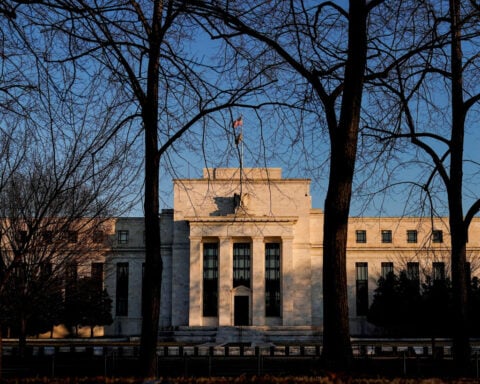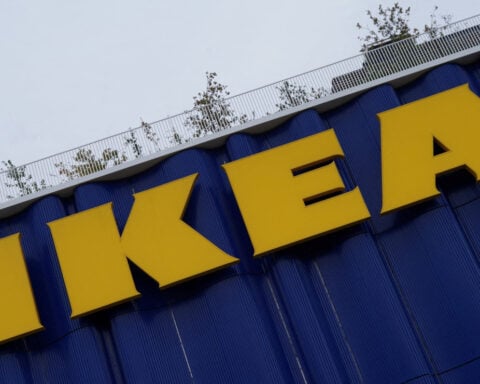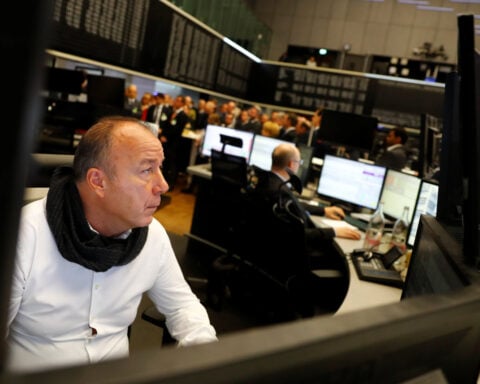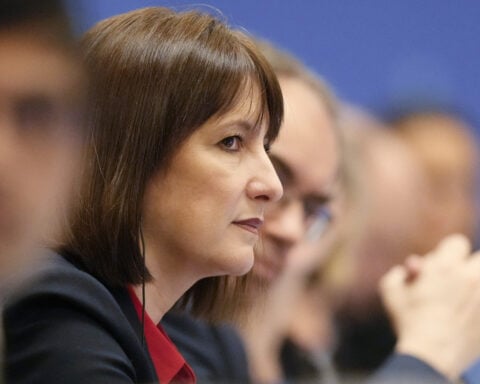By Lucia Mutikani
WASHINGTON (Reuters) - U.S. economic activity was either even weaker or not as strong as previously estimated in each of the first quarters of 2020, 2021 and 2022 amid downgrades mostly to consumer spending, revised government data showed on Thursday.
But the Bureau of Economic Analysis (BEA), the government agency that constructs the gross domestic product report, said there was no evidence that residual seasonality, which plagued the GDP data several years ago, was an issue.
The government adjusts economic data to remove fluctuations such as seasonal weather patterns and holidays that normally occur at roughly the same time and magnitude every year, to make the series easier to interpret and analyze. But seasonal effects have lingered in some cases even after the data was seasonally adjusted. This was most prevalent in first-quarter GDP data, before the government resolved the problem in 2018.
Back then, residual seasonality tended to understate economic growth in the first quarter.
"We put forward a whole set of protocols and mechanisms, which we were going to check to make sure we didn't have residual seasonality," Dave Wasshausen, associate director, National Economic Accounts at the BEA told reporters.
"And so we continue to run all those tests, checks, just to see if there's residual seasonality and there is not any. We didn't see anything in particular that gave us pause about persistent components revised up or down."
GDP in the first quarter of 2020 was revised down to show it contracting at a 5.3% annualized rate, instead of the previously reported 4.6% pace. But GDP for the whole of 2020 was upgraded by 0.6 percentage point to show the economy contracting 2.2% amid robust performances in the third and fourth quarters.
In the first quarter of 2021, GDP increased at a 5.2% rate rather than the previously published 6.3% pace, with consumer spending revised lower. Growth for the full year was trimmed to 5.8% from 5.9%, reflecting downgrades to state and local government spending, federal government spending and nonresidential fixed investment.
In 2022, GDP contracted at a 2.0% rate in the first quarter, revised down from the previously reported 1.6% pace. Consumer spending, now estimated to have been flat instead of growing at a 1.3% rate as previously reported, accounted for the downgrade.
For the full year, economic growth was lowered by 0.2 percentage point to 1.9%, the result of downward revisions to consumer spending, inventory investment, state and local government spending and exports as well as an upgrade to imports.
The annual benchmark revisions incorporated results of the 2017 Economic Census. The reference year was shifted to 2017 from 2012. The economic picture was little changed from 2017 to 2022, with GDP growing at an average annual rate of 2.2%, up from the previously estimated 2.1% pace.
The COVID-19 pandemic recession remained the deepest on record, with the economy contracting at an average rate of 17.5% from the fourth quarter of 2019 to the second quarter of 2020, revised up 0.7 percentage point. The recovery was the second- fastest in history.
When measured from the income side, the economy expanded at an average rate of 2.3% from 2017 to 2022. Gross domestic income (GDI) was 0.2 percentage point higher than previously estimated.
Some economists have focused on the gap between the quarterly GDP and GDI rates to argue that the economy was not as strong as recent data suggested.
Though the gap or statistical discrepancy, was wider in the fourth quarter of 2022, it narrowed for the full year, coming in at -0.2% of GDP instead of the previously reported −0.6%. The gap was less than 0.1% of GDP in 2022, revised from −0.6%.
"It's worth noting the average statistical discrepancy as a share of GDP over the last 50 years is about 0.9%," said Wasshausen. "And with the updated figures from 2017 forward, the share is 0.3% or less in each of these three years. So with this update, we feel really very good about where that statistical discrepancy is sitting."
Inflation was a little hotter than previously reported in 2022, when the Federal Reserve started raising interest rates. The personal consumption expenditures price index excluding food and energy increased 5.2% last year, revised up from 5.0%.
The core PCE price index was revised higher in the first, third and fourth quarters of 2022.
(Reporting by Lucia Mutikani; Editing by Andrea Ricci)

 Italy, Albania, UAE sign deal for energy subsea interconnection
Italy, Albania, UAE sign deal for energy subsea interconnection
 European shares advance as bond yields ease; soft inflation powers UK stocks
European shares advance as bond yields ease; soft inflation powers UK stocks
 Bank Indonesia delivers surprise rate cut to support growth
Bank Indonesia delivers surprise rate cut to support growth
 Novak Djokovic breaks a tie with Roger Federer for the most Grand Slam matches in tennis history
Novak Djokovic breaks a tie with Roger Federer for the most Grand Slam matches in tennis history
 China's RedNote: what you need to know about the app TikTok users are flocking to
China's RedNote: what you need to know about the app TikTok users are flocking to
 British author Neil Gaiman denies ever engaging in non-consensual sex as more accusers come forward
British author Neil Gaiman denies ever engaging in non-consensual sex as more accusers come forward








